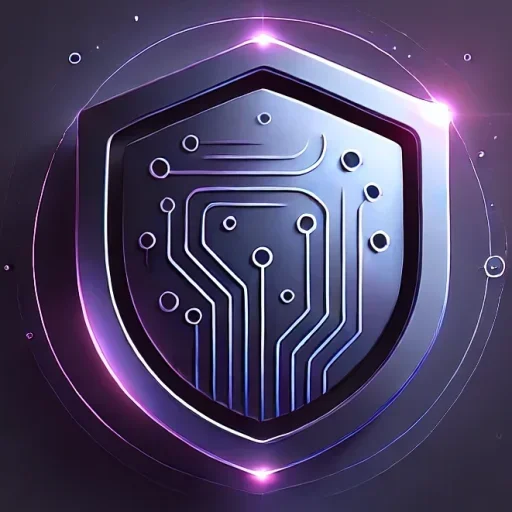
In today’s hyperconnected world, AI-powered cybersecurity has become a high-stakes arms race. While organizations leverage artificial intelligence to defend their digital assets, cybercriminals are equally innovative, employing AI to create sophisticated attacks, advanced phishing campaigns, and adaptive malware. This dual-use of AI technology has created a complex security landscape where staying protected requires cutting-edge solutions.
As we navigate through 2025, the threat landscape continues to evolve at an unprecedented pace. Organizations face not just traditional cyber threats, but also AI-powered attacks that can adapt and evade conventional security measures. This makes AI-powered security tools more critical than ever for maintaining robust cyber defenses.
In this post, we’ll explore five of the top AI-powered cybersecurity tools protecting businesses, what they do, and how they protect businesses from cyberattacks. Additionally, we’ll cover complementary security tools, including VPNs, AI-driven firewalls, and password managers that can further protect your digital life.
Related: Learn about how AI-assisted hacking is changing cybersecurity and what you can do to stay protected.
Business and Enterprise AI-Powered Cybersecurity Tools
1. Darktrace Enterprise Immune System

Darktrace stands out by mimicking biological immune systems, creating an adaptive security framework that learns and evolves with your organization.
Key Capabilities:
- Self-learning AI that establishes unique “patterns of life” for every network
- Real-time anomaly detection across cloud, IoT, and traditional networks
- Autonomous response capabilities that contain threats within seconds
- Multi-dimensional analysis of network behavior
- Advanced threat visualization and reporting
Real-World Impact:
Bank One, a multinational banking institution prevented a ransomware attack when Darktrace detected irregular encryption behavior on a network server, triggering an automatic response that halted the attack.
Who Uses It?
Large corporations, government agencies, and financial institutions.
🔗 Get Darktrace for your business →
2. CrowdStrike Falcon

CrowdStrike’s cloud-native platform represents the next generation of endpoint protection, combining AI-powered threat detection with unprecedented speed and scalability.
Key Capabilities:
- Behavioral AI that analyzes endpoint activities in real-time
- Cloud-scale threat intelligence processing billions of events daily
- Graph database technology for mapping attack patterns
- Lightweight agent with minimal performance impact
- Integrated threat hunting and incident response tools
Real-World Impact:
Driscoll Health System implemented CrowdStrike Falcon Complete to enhance their cybersecurity posture. The deployment provided comprehensive visibility and accelerated their ability to detect, contain, and remediate threats across 4,000 endpoints, significantly improving their security operations.
Who Uses It?
Businesses, healthcare, and government agencies.
3. IBM QRadar with Watson

IBM Watson uses AI-driven threat intelligence to analyze security reports, detect vulnerabilities, and suggest the best responses to cyber threats. The integration of IBM’s QRadar SIEM with Watson’s cognitive capabilities creates a powerful security intelligence platform that augments human expertise with AI-driven insights.
Key Capabilities:
- Natural language processing for analyzing unstructured security data
- Automated investigation workflows with contextual intelligence
- Machine learning models trained on global threat data
- Integration with existing security tools and workflows
- Advanced security analytics and reporting
Real-World Impact:
Abtran, a leading business process outsourcing company, collaborated with Smarttech247 to implement IBM Watson for Cybersecurity. This integration enhanced Abtran’s threat detection capabilities, allowing for more efficient identification and response to potential security incidents.
Who Uses It?
Enterprises, cybersecurity teams, and IT service providers.
🔗 Learn more about IBM Watson Security →
4. Symantec Endpoint Protection

Symantec’s solution combines traditional security approaches with advanced AI to create a comprehensive endpoint protection platform to stop malware, ransomware, and zero-day attacks before they spread.
Key Capabilities:
- Pre-execution AI analysis to block suspicious files
- Cloud-based threat intelligence updates
- Multi-layered defense against various attack vectors
- Memory exploitation protection
- Advanced machine learning for zero-day threat detection
Real-World Impact:
Budapest Bank sought to enhance its cybersecurity infrastructure and chose Symantec Endpoint Protection to replace its previous tools. This implementation provided the bank with adaptive, in-depth protection for its servers and endpoints, significantly improving its defense against malware and other cyber threats.
Who Uses It?
Businesses, financial institutions, and enterprises.
🔗 Get Symantec Endpoint Protection →
5. Vectra AI Platform

Vectra’s platform excels in AI-driven network detection and response, offering sophisticated threat hunting capabilities.
Key Capabilities:
- Real-time analysis of network metadata
- Behavioral AI models for all network entities
- Automated threat prioritization
- Cloud-native security architecture
- Advanced security workflow automation
Real-World Impact:
Globe Telecom, a leading telecommunications company, partnered with Vectra AI to enhance its cybersecurity posture. By implementing Vectra’s AI-driven network detection and response solutions, Globe Telecom achieved a 99% reduction in alert noise and a 78% improvement in threat response times, effectively safeguarding its network infrastructure and over 80 million customers.
Who Uses It?
IT security teams, enterprises, and cloud-based organizations.
🔗 Discover Vectra AI’s solutions →
Related: 7 AI Cybersecurity Best Practices for Good Cyber Hygiene
Affiliate Disclosure: This post contains affiliate links. If you purchase through these links, we may earn a small commission at no extra cost to you. We only recommend products we trust and use ourselves. Learn more about our affiliate policy.
Building a Comprehensive Security Stack

While these AI-powered tools form the backbone of modern cybersecurity, a robust security strategy should include complementary solutions:
Related: How to Secure Your Smart Home from Hackers: The Ultimate Guide 2025
Essential Complementary Tools:
- Firewalla – An AI-driven firewall that secures home and business networks with advanced threat detection and automated response capabilities.
- Strong VPN – Enterprise-grade encryption solutions that protect your online activity with military-grade security protocols
- Encryption and Password Management – End-to-end encrypted communication and password management solutions designed for maximum security.
Related: Best AI-Powered VPNs for Privacy in 2025
Conclusion
The landscape of cybersecurity is evolving rapidly, with AI playing an increasingly central role in both attack and defense strategies. The tools highlighted here represent the current state of the art in AI-powered security, but they’re most effective when deployed as part of a comprehensive security program that includes:
The Future of AI-Powered Cybersecurity
Organizations must stay informed about emerging threats and continue to evolve their security strategies. The future of cybersecurity lies not just in deploying AI-powered tools, but in creating intelligent, adaptive security ecosystems that can respond to threats in real-time while maintaining operational efficiency. As we move forward, the integration of AI in cybersecurity will continue to deepen.
Key trends to watch:
- Advanced threat prediction using predictive AI models
- Automated security orchestration and response
- AI-driven security awareness training
- Quantum-resistant encryption development
- Enhanced privacy-preserving machine learning
- Integration of blockchain for enhanced security
- AI-powered biometric authentication systems
Best Practices for Implementation
- To maximize the effectiveness of AI-powered security tools:
- Start with a comprehensive security assessment
- Implement tools gradually and systematically
- Ensure proper staff training and certification
- Regularly update and patch all systems
- Maintain comprehensive documentation
- Conduct regular security drills and testing
- Establish clear security policies and procedures
This article was last updated on February 28, 2025, and reflects the most current information available about these security tools and their capabilities.
🔐 Sign up for our cybersecurity newsletter and updates here →
